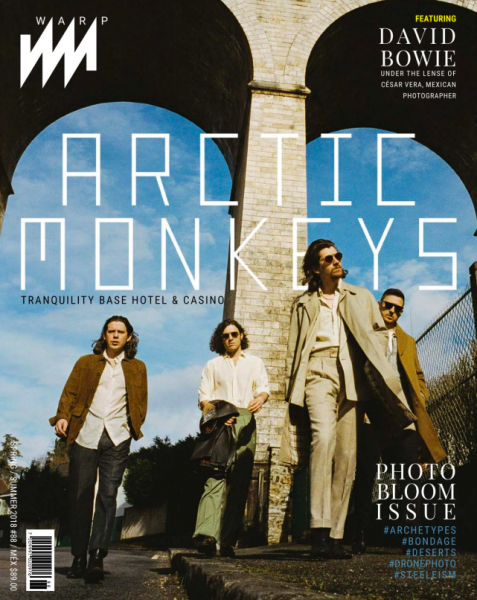#FromTheMag: César Vera, el fotógrafo mexicano que capturó el sonido de una época
// Por: Samantha Archibald
vie 1 junio, 2018
Fotos por: César Vera
César Vera siempre supo lo que le apasionaba: el arte, la fotografía y la música y se ha destacado en hacer de sus aficiones un modo de vida.
El primer contacto que tuvo con la música y la fotografía fue por la suerte de crecer en una familia que apreciaba el arte. Su mamá era académica, pero su pasión fue la fotografía; su papá trabajaba para la industria textil, pero su afición fue la música:
Mi mamá era la fotógrafa de la casa y filmaba en película Super 8. Y, mi papá tenía sus bocinas grandes, amplificadores y ponía música de Jazz a todo volumen, mis hermanos mayores ponían, The Beatles y, The Doors, a mi papá le gustaban. Se prendía con The Doors, sobre todo con la pieza: Light My Fire, decía que era como una improvisación.
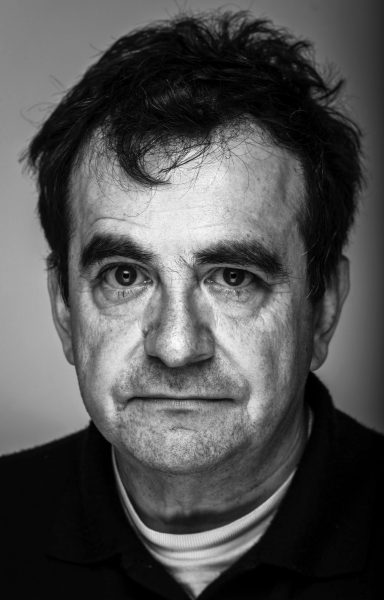
Cesar Vera
El inicio del sueño
Cuando le preguntaron a qué quería dedicarse, llegó el momento de tomar la decisión. Dijo que quería ser músico o fotógrafo.
Era lo que me gustaba. Me decían: —No. Hablamos de carreras en serio—. Pues, ser músico o fotógrafo, no era considerado una profesión, lo veían como un pasatiempo. Decidí estudiar la carrera de Sociología por disciplina y establecerme como fotógrafo. La música la he hecho siempre, está en mi vida, me estimula, hasta formé bandas. Me gusta tocar el bajo, estudié con Eugenio y Enrique Toussaint. Más tarde, aprendí guitarra y piano, pero mi instrumento es el bajo.
Los resultados de sus proyectos creativos son increíbles, por lo cual, le pregunté si imaginaba el producto final con base a la música:
En una sesión fotográfica, la música la crea el ambiente y he tenido suerte en Nueva York y aquí. Tengo mi playlist, bailo y me divierto. Creo un ambiente alrededor de esto, a la imagen de la foto y, si vamos a hacer un comercial, la música es muy importante y me involucro. Algunas veces para mantener el ambiente pongo música urbana, pero más armónica y de buenos beats como Tyler The Creator y No Name, o temas clásicos como Walking On The Side, siempre hay elementos que puedes repetir y sí, el mood de la música ayuda a la proyección.
La tecnología fotográfica habla sobre dos procesos: lo análogo y lo digital, sobre esto, Cesar opinó:
Soy categóricamente análogo. Recuerdo a mis compañeros alemanes con quienes compartí estudios y les presumía que yo sabía más. En ese tiempo, la cuestión análoga era sólida, pero empezó a llegar lo digital y hubo una vertiente que todavía no me convencía hasta que se aceleró el internet, entonces ya todo era mucho más rápido para entregar. Eso me cambio la jugada. Pero no dejo de hacer cosas análogas. Hoy en día, amigos hablan sobre una Face One de 100 Mpx, hay que invertirle 30 mil dólares, y para manejar esos archivos pesados se requiere de una súper computadora, se escala digitalmente y es demasiada inversión. En eBay, conseguí una Mamiya de 6×7, me costó cerca de 1500 dólares, y 5 rollos de 40 dólares, el revelado más el escáner, súmale otros 40 dólares y no me llevo los 200 por el shoot. Total, no tengo que invertir 80 mil dólares para trabajar, la gente está optando por esto.

Polaroid Photo for InFashion Magazine, 1990
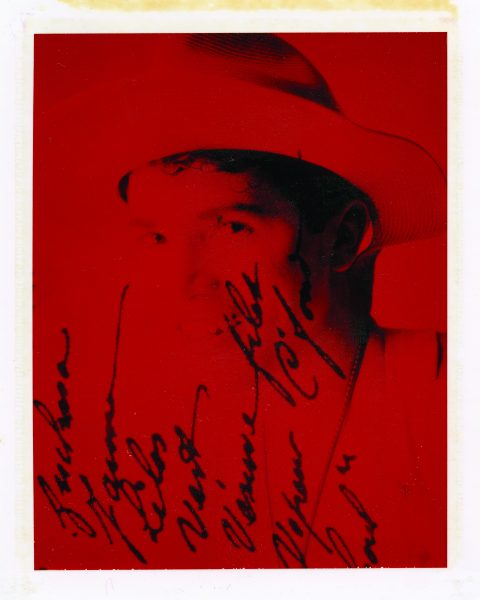
Signed Polaroid Portrait John Leguizamo
Primeros pasos al éxito
Cesar cuenta que las oportunidades que le abrieron las puertas al éxito, comenzaron a partir de estudiar en el Goldsmith College en Londres.
Enseñaban justo lo que quería aprender de fotografía era un posgrado enfocado a la comunicación visual. Así, podría establecerme, pero abarcando otros temas y tuve la oportunidad de viajar. Me relacioné con amigos que les gustaba mi trabajo. Un día, conocí a una periodista que me facilitó el contacto con escritores que vivían en París, me propuso un proyecto y, ese verano, tuve el honor de fotografiar a Julio Cortázar, a Juan Soriano y a otros genios de las letras. Con este proyecto de retratos se empezaron a abrir las oportunidades fue mi big break. En Londres exhibí y colaboré con Ian Jeffrey, escritor de fotografía y, tuve la suerte de fotografiar a Álvarez Bravo, tomé su retrato para la exhibición.
De este lado del Río Bravo y en Estados Unidos, trabajé con Whitney Houston, B.B. King, Etta James, hice un poco de pop con The Jonas Brothers, pero fue inolvidable, trabajar con Phil Collins cuando se reunieron para Genesis. Y, de otros géneros musicales, del Jazz me tocó trabajar con Paquito Rivera, Chico O´Farril, con Cachao, en un proyecto que hicimos sobre el Jazz, con Arturo Sandoval, trompeta y, en México con Rocío Dúrcal, Manuel Mijares, Emmanuel y otros.
Otra buena oportunidad, fue en Milán, conocí al agente de Vanity Fair, alguien le comentó que Sting estaba grabando en un castillo cercano. Rápidamente, me ofrecí a tomar las fotos, el agente accedió. Así, a veces se dan las cosas por mera coincidencia.
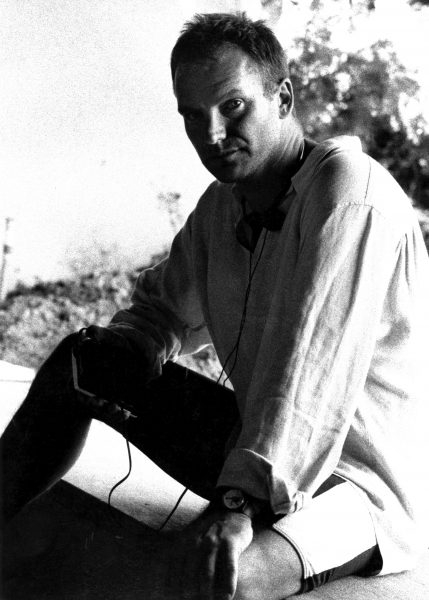
Sting, 1991. Castle in Tuscany, Italy. During the shooting of Soul Cages
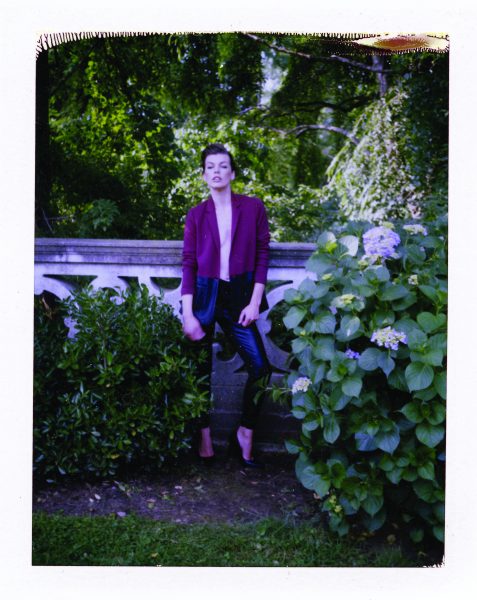
Polaroid Photo Mila Jovovich, for Fashion Fest in New York, 2014
El arte en México
Después de vivir 27 años en Nueva York, hablamos de México:
Por lo general, trato de pasar los veranos en Nueva York, pero, por ahora me motiva estar en México, pasa por un momento crítico, pero soy optimista y veo que hay una gran atracción. Aunque puedo hacer muchas cosas en Estados Unidos, allá, soy uno más. Sin embargo, en México me siento significativo, puedo capitalizar, regresar y corresponder de algún modo lo que he aprendido aquí. Necesitamos entender que nuestra perspectiva histórica nos revalora. Como parte de mi trabajo estoy haciendo un homenaje a grandes fotógrafos mexicanos. Estoy desarrollando una serie pequeña de televisión, sobre arte y me interesa la cultura urbana que está generándose por la música.
Sobre cómo y de qué país elige a sus colaboradores dijo:
Cuando me abría paso fui un poco diverso ya que la competencia en Nueva York está por todos lados y lo mejor es aliarte. Así, tuve la suerte de aprender algo y por cuestiones técnicas es mejor compartirlo. A mis asistentes mexicanos, ambos excelentes fotógrafos, Javier Ortega y Dulce Pinzón, les comparto lo que sé.
Sobre los fotógrafos que le inspiran mencionó:En Inglaterra me gustaba el trabajo de David Bailey, por su estilo fotográfico y, su estilo de vida, él salió en la película Blow Up. Y, de origen estadounidense, Irving Penn, los clásicos siguen siendo mi inspiración.
Para concluir, hablamos sobre el tema del entorno social, político internacional. Y cómo, perciben a México, los artistas americanos:
La idea es contextualizarlo un poco. Vivimos 8 años de la Administración de Barack Obama, en temas culturales y de integración, hubo un avance extraordinario, por eso, la música como la de Tyler- The Creator, logra sonar en el Festival Panorama y es mainstream. Es una gran incursión por eso el rap no es agresivo sino poético y, ahí está la evolución. Imposible que llegue Trump y la desaparezca. Los asuntos migratorios, siempre ha sido un tema sensible. Obama deportó a cientos de miles, creo que no se habla suficiente sobre lo que aportamos los mexicanos legales que vivimos en Estados Unidos. La realidad es que apoyamos a grupos de inmigrantes y valoramos más a México.
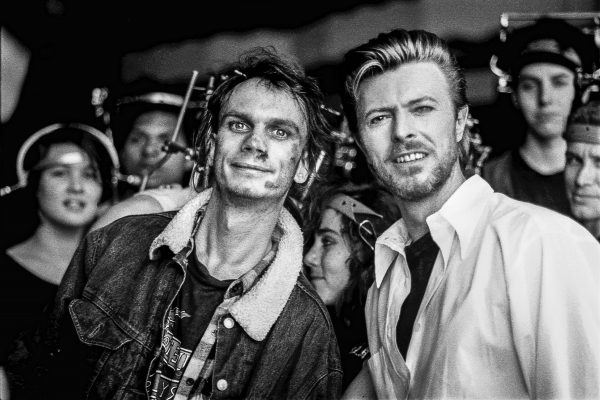
Portrait, Bowie and crew
César Vera y David Bowie
César vera nos comparte fotos inéditas del tour book para la gira mundial de tin machine, 1989
En esta edición de WARP, Vera nos comparte fotografías inéditas del tour bookde Tin Machine de David Bowie. Algunas de estas tomas se utilizaron como portadas de Singles en Vinyl y CD; “Prisoner of love” fue una de ellas. Vera también participó en la produccion y asistencia de la foto final que se utilizó de portada para el álbum Tin Machine por Sakita, fotógrafo japonés. Al preguntarle sobre cómo se dio esta oportunidad, respondió:
Fueron oportunidades mágicas, desde que llegué a Nueva York, fue una serie de sucesos, coincidencias, recomendaciones por mi portafolio y, simplemente, me dieron la oportunidad de trabajar con Bowie. El plan era fotografiarlo mientras hacia el video de Tin Machine con Julian Temple. Me impresionó mucho su calidad humana: había una mesa larga donde trabajábamos y a la vez ahí se servía la comida. Estaba haciendo fila con mi amigo John Wells, de pronto, se paró David Bowie y quedó entre nosotros, el productor lo llamó: “Hey, David”, para alguna cosa y contestó: —“No, yo respeto la fila para comer”—. En ocasiones David Bowie se sentó con nosotros a conversar como si nada. Se sabía los nombres de todos y decía frases memorables.
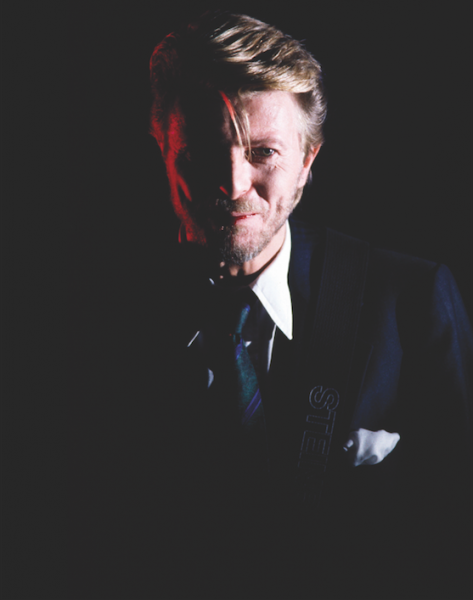
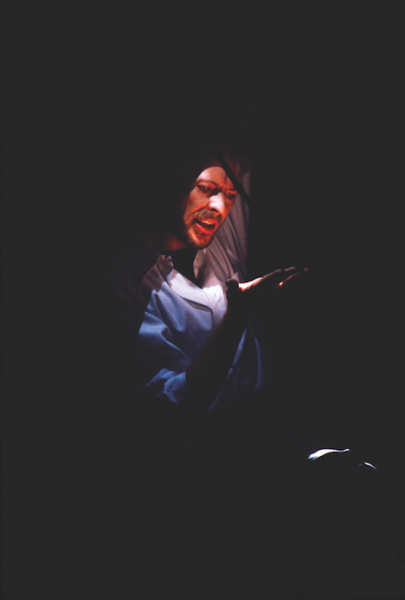
English Feature
Cesar Vera always knew what he was passionate about: art, photography and music, he stands out by making his hobbies a lifestyle.
The first contact that he had with music and photography was growing up in a family that appreciated art. His mom was an academic, her passion was photography; his dad worked for the textile industry, but his hobby was music: “My mom was the photographer of the family and she filmed in Super 8 film. And, my dad had his big speakers, amplifiers and he used to play Jazz music at full volume, my older brothers used to play The Beatles and The Doors, my dad liked them as well. He got excited with The Doors, especially with the song: Light My Fire, he used to say that it was like an improve.”
When his parents asked him what career path he’d take, it was time to make a decision: musician or photographer: “We are talking about serious careers- they would say. Because, being a musician or a photographer wasn’t considered a profession, it was seen as a hobby. I’ve always made music, it’s in my life, it stimulates me, I even formed bands. I play the bass; I studied with Eugenio and Enrique Toussaint. Later, I learned to play the guitar and piano, but my favourite instrument is the bass.”
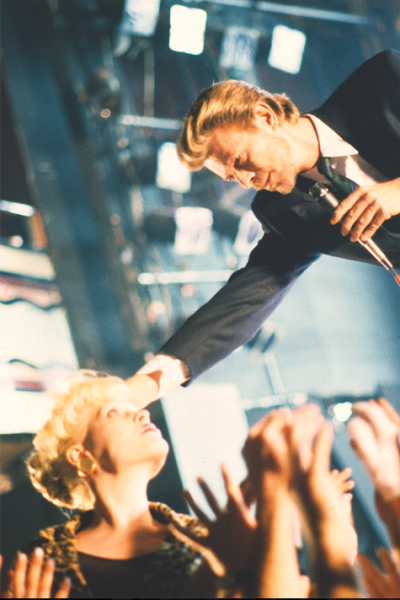
The Start Of a Dream
The results of his creative projects are amazing, because of it, we asked him if he imagined the final product according to the music: “In a photographic session, the music sets the mood and I’ve been lucky in New York and in here. I have my playlist, I dance and I have fun. I create the mood around this, the image of the photo and if I’m making a commercial, the music is very important and I involve myself. Sometimes to keep the mood I put urban music, but more harmonic with great beats like Tyler The Creator and No Name, or classic songs like Walking On The Side, there’s always elements that you can repeat and yes, the mood of the music helps with the projection.”
The photographic technology talks about 2 processes, the analogue and the digital, about this, Cesar said: “I’m, categorically, analogue. I remember my German classmates with whom I studied and I showed off that I knew more, back then, analogue was solid, but then digital came and there was a slope that I wasn’t convinced by, until the internet made everything much faster to deliver. That changed everything for me. But I’m still doing analogue stuff. Nowadays, friends of mine talk about a Face One of 100 Mpx, you need to invest 30 thousand dollars, and to manage those heavy files you need a super computer, it’s digitally scaled and is a really big investment. On eBay, I got a Mamiya of 6×7 that cost over 1500 dollars, and 5 rolls of 40 dollars, the processing and scan another 40 bucks and I don´t spend even 200 for the shoot. In the end, I don’t need to invest 80 thousand dollars to work, people are opting for that.”
Cesar tell us that the opportunities that opened the doors to his success, started when he studied in Goldsmith College in London: “They had just what I wanted to learn about photography, it was a postgraduate focused in visual communication. Like that, I could establish myself, but including other subjects and I had the opportunity to travel. I found myself with friends that liked my work, one day, I met a journalist that gave me the contact with some writers that lived in Paris, they proposed me a project and, that summer, I had the honour of photographing Julio Cortázar, Juan Soriano and other geniuses with words. With this project of portraits, I had new opportunities, it was my big break. In London I exhibited and collaborated with Ian Jeffrey, writer of photography and, I had the luck to photograph Álvarez Bravo, I took his portrait for the exhibition.”
“Another great opportunity was when I was in Milán, I met the Vanity Fair agent, someone told him that Sting was recording in a castle nearby. Rapidly, I offered to take the pictures, the agent accepted. Sometimes things happen like that, by mere coincidence. From this side of the Bravo River and in The United States, I’ve worked with Whitney Houston, B.B. King, Etta James, I made a little of pop with The Jonas Brothers, but it was unforgettable, working with Phil Collins when they reunited for Genesis. And, other music genres, like Jazz I got to work with Paquito Rivera, Chico O’Farril, with Cachao, in a project that we made about Jazz, with Arturo Sandoval, trumpeter and, in Mexico with Rocío Dúrcal, Manuel Mijares, Emmanuel and others.”
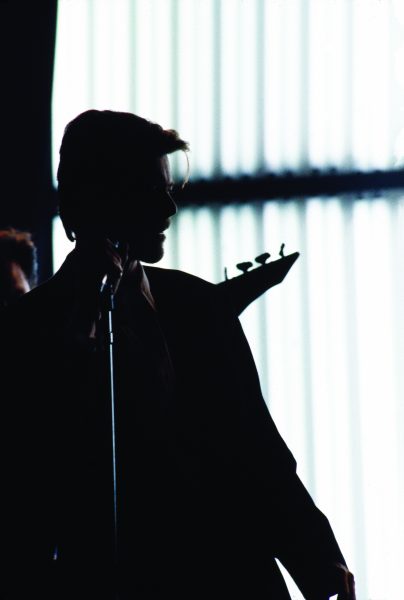
The Art In México
When talking about his relationship with Mexico, after living 27 years in New York, he answered: “I try to spend summers in New York, but, now I want to be in Mexico, it is a critical moment, but I’m optimistic and I see there’s a great attraction. Even though I can make a lot of stuff in the U.S., I’m just one more in the crowd. However, in Mexico I feel significant, I can capitalize, come back and reciprocate in some way everything I’ve learned here. We need to understand that out history adds value to us. Another project coming soon, I’m making a tribute to great Mexican photographers. I’m also developing a little television series, about art and I’m interested in the urban culture that is generating itself by music.”
How he chooses his collaborators, I asked him if he gives opportunities to mexicans or people from other countries: “When I was starting, it was more diverse due to the competition in New York, it comes from everywhere so the best thing to do is make allies. So, I had the luck to actually learn something, and in technical matters it’s better to share what you know, I do, to my mexican assistants, both excellent photographers, Javier Ortega and Dulce Pinzón.”
About the photographers that inspire him he mentioned: “In England I like the work of David Bailey, his photographic style and lifestyle, he was part of the movie Blow Up. And, from The US, Irving Penn, the classics are still my inspiration.”
To conclude, we talked about the social, political and international environment, about how American artists perceive Mexico: “We have to contextualize a little: We lived 8 years under the Administration of Barack Obama, in cultural and integration matters, there was an extraordinary progress, because of it, music like Tyler The Creator, gets to sound at the Panorama Festival and it’s mainstream. Is a great incursion therefore rap is not aggressive but poetic and, there’s the evolution. It’s impossible for Trump to arrive and have that disappear. In migration matters, it’s always been a sensible subject. Obama deported thousands of hundreds; I believe that people don’t talk enough about what the legal mexicans that live there contribute to the United States.”
In this edition of WARP, Cesar shares with us inedited pictures of David Bowie, asking him how this opportunity came to life he answered: There have been opportunities almost magical, I’ve just got in New York, I worked with super models and I didn’t know what a super models was. It was a series of events, coincidences, and recommendations by my portfolio and, just like that, I got the opportunity of working with Bowie. The plan was to photograph him while he was making a music video with Julian Temple. I was very impressed with his human quality: there was a large table where we worked and there was food, in line, my friend John Wells and I, were ready to help, suddenly, David Bowie was in the same line waiting, “Hey, David”, the produced spoke to him and, Bowie answered: –“No, I respect the waiting line” –. In 2 occasions David Bowie sat with us to eat, and talk with the rest of us. He knew everyone’s names and he always said memorable phrases.

La Revista
La entrevista está disponible en WARP 88 Spring-Summer.
Puedes leerla ahora mismo a través de nuestro Issuu.
